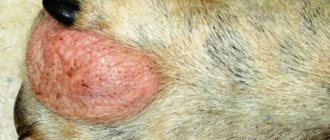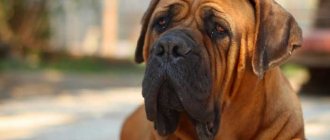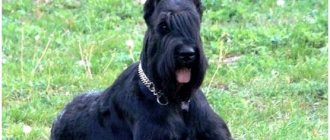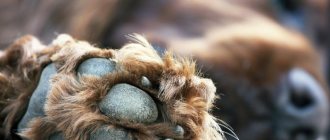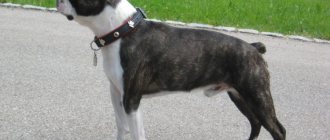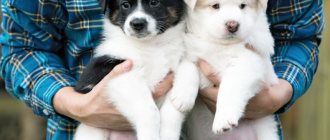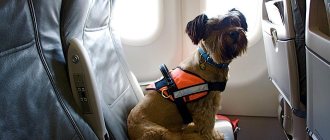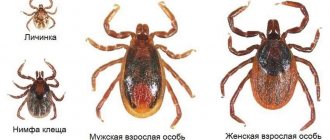Each of us, during hours of aimless wandering through the Internet, comes across a large number of various tests. Something from the series “The posture in which you usually sit (sitting, reading, falling asleep, etc.) will say everything about your character.” So similar tests exist for animals. Particularly for dogs. So, if you want to learn more about your dog - its character, its emotional state - watch how it sleeps.
Sleeping on your side.
This is the most common position in dogs. A dog that stands on its side feels comfortable in its environment, feels calm and safe, and is not on guard. The dog has trust and respect for its owner. In most cases, these are dogs that tend to be happy.
Health
Your dog's overall health can affect how long he sleeps. Chronic diseases such as:
- Disorders of the cardiovascular system and blood pressure.
- Arthritis. Pain in the joints leads to the fact that the animal cannot completely relax. Any movement of the paws increases pain and disrupts sleep.
- Kidney diseases and renal failure. Disruption of the urinary system leads to a decrease in the production of melatonin, the hormone responsible for sleep.
- Infectious or viral diseases. For example, a dog may catch a cold while walking in the rain and may have a high fever, which affects the quality of sleep.
- Fatigue. The environment also affects the health of the animal. If there are screams, quarrels, fights in the family, or the animal picks up uncontrollable convulsions of children or kicks, then it is constantly in a state of stress. The animal sleeps poorly, becomes irritable and aggressive.
Another important factor that affects sleep is obesity in dogs. The owner’s desire to satiate the pet with all the wrong food or a sedentary lifestyle leads to the accumulation of visceral fat in the abdominal cavity. It puts pressure on the internal organs, shortness of breath occurs, and blood circulation throughout the body is disrupted.
Important! To restore the quality of sleep in a dog, you need to seek help from a veterinary clinic and conduct a series of examinations and procedures.
Sleep half sideways.
This pose is practically ineffective for relaxation and rest. The dog is always ready to jump up and act; the deep sleep phase does not occur. The animal is dozing rather than truly sleeping. This position is typical for guard and guard dogs. And also for those who consider themselves “in service.” Dogs often sleep in this position next to their owner - they are ready to defend him if something happens.
Sleep phases
There are two phases of dog sleep: REM and NREM.
REM sleep
REM sleep is deep sleep. It is in this phase that the activity of the cardiovascular and respiratory systems becomes more active. During sleep, the dog's whiskers begin to twitch, his lips begin to twitch, and his eyes move intensely under closed eyelids. The tail begins to whine in its sleep, twitch its paws and smack its lips. It is believed that it is during this phase that the animal dreams (chases a cat, runs after a ball, or eats something tasty).
A dog's dreams, just like a person's dreams, directly depend on his lifestyle. If the dog is a hunting dog, then in a dream he will constantly run and catch prey. But if the dog is a guard dog, then in a dream it will grumble, growl and protect the house from an invisible enemy.
Despite the fact that during the rapid phase of sleep the four-legged dog behaves so restlessly, and this phase is very short and makes up only 25% of the total amount of sleep time, it is still deep sleep and the nervous system also rests.
slow sleep
Slow or light sleep is characterized by decreased muscle tone. The dog's breathing normalizes and calms down, and the heart rate slows down. NREM sleep is characterized by the absence of dreams and serves to restore the dog's physical strength.
Continuing our research, let's talk about why, when going to bed, the dog begins to spin like a top.
Curled up in a ball.
The so-called “fox” position is also quite common. Dogs that sleep this way have a kind, flexible and gentle character, and maybe something is bothering him. Another reason is that your pet may be simply cold and in this way it retains heat and protects its limbs.
This is interesting
It happens that dogs start digging and rustling their sleeping place before going to bed and spinning around. This is how the dog tries to create more comfort for itself, it wants to create more comfort. Often this indicates the animal’s anxiety, that it has experienced some kind of moral dissatisfaction during the day and wants, when going to sleep at night, to create a more favorable atmosphere for itself that it had during the day.
Of course, there are also poses that defy any classification. Often this becomes a subject for a photo. Puppies or hyperactive dogs who fall asleep during their pranks in a place where fatigue overtook them can fall asleep in a completely unimaginable position.
INTERESTING: Some owners notice that their sleeping dog may cluck and twitch its paws slightly in its sleep. This suggests that the dog is deeply asleep and dreaming at this moment.
Superman pose
This is one of the most adorable positions adopted by sleeping dogs. The dog sleeps lying on its stomach, with its four limbs extended and its head perfectly aligned. This is a typical position for puppies, because from this position when waking up it will be easier to jump up and start moving. If your pet has already left childhood, but continues to sleep in the Superman position, then he is still full of energy like a puppy and is ready to play noisy and energetic games.
Sleep need and duration
Depending on the age, the need for wakefulness and rest in pets is different. If a puppy sleeps at least 20 hours a day up to three months of age, then an adult dog sleeps half as much.
If the dog’s wakefulness and rest are distributed as a percentage, then the picture will be as follows:
- active wakefulness – 20%;
- sleep – 50%;
- nap, temporary rest – 30%.
The duration of sleep depends on the following:
- Age. Old age requires more time to recuperate.
- A stressful situation causes a protective reaction in the body and the animal is able to sleep for 16-20 hours.
- Sadness, boredom. The long absence of the owner of the house, a calm atmosphere, is conducive to sleepy pastime.
- Breed. Large breed animals have longer rest periods than small breed animals, as they require more time to recuperate.
- Weather. The influence of weather conditions is possible - weather changes, heat, cold - all this affects the behavior of the animal.
- Disease. Often the onset of an illness makes itself felt by such behavioral signs as weakness, lethargy, and drowsiness. If you suspect an illness, you should visit a doctor.
Pose on your stomach.
In this case, the animal’s muscles remain slightly tense, and the sleep is more sensitive than in the previous point. This is usually an indication that dogs tend to be energetic, adventurous, and always ready for action and play. They are also friendly, although a little shy.
Light nap
A dog may nap during the day if it is bored or just resting. This is not a very restful sleep, and your dog may simply be waiting for something more interesting.
Keep an eye on your puppy's ears and see if they perk up with any movement or unusual noise. This probably means your dog is still quite alert and looking for something worth getting up for.
Maybe it's time to do something fun like go for a walk or play shopping.
On the back
A position similar to “fainting” is mainly occupied by dogs living in a house and completely trusting their surroundings. This is evidenced by the fact that all the most vulnerable parts of the animal - the throat, the stomach - are completely open. This is how dogs sleep that are happy, confident and relaxed, with an easy-going nature that easily adapts to new situations. The second probable reason is that the dog has used up all its energy, overheated, and this position helps it not only relax, but also cool down.
Popular on social networks
© JSC "Editorial office of the newspaper "Moskovsky Komsomolets" Electronic periodical publication "MK.ru"
Registered by the Federal Service for Supervision of Communications, Information Technologies and Mass Communications (Roskomnadzor). Certificate El No. FS77-45245 Editorial office – JSC “Editorial office of the newspaper “Moskovsky Komsomolets”. Editorial address: 125993, Moscow, st. 1905 Goda, no. 7, building 1. Telephone, +7(495)609-44-33, e-mail Editor-in-Chief and founder - P.N. Gusev. Third Party Advertising
All rights to materials published on the website www.mk.ru belong to the editors and are protected in accordance with the legislation of the Russian Federation. The use of materials published on the website www.mk.ru is permitted only with the written permission of the copyright holder and with a mandatory direct hyperlink to the page from which the material was borrowed. The hyperlink should be placed directly in the text reproducing the original mk.ru material, before or after the quoted block.
Fantastically awkward position
If your dog sleeps in some amazing, amazing, completely impossible position, there are two versions. Is your dog very tired or is he a big original! In any case, take a photo of it and share it with the audience - you are guaranteed a flurry of emotions and likes!
Well, in any case, no matter what sleeping position your pet chooses, the main thing is that he gets a good night's sleep and wakes up rested, cheerful and ready for new tricks!
Alarm clock dog
When your pet falls asleep next to you unnoticed, but in the morning brings his wet leather nose to your face to wake you up, this means that he is very playful. Such animals do not like to sit still, they are very active and always on the alert. In addition, a four-legged dog with such a character will always protect its owner, as it loves him immensely.
If there is little snow, there will be no harvest: December 16 is Ivan the Silent Day
Women's jeans: before you buy them, you need to pay attention to one detail
Smooth and fresh skin: dermaplaning, or why a woman needs to shave her face
